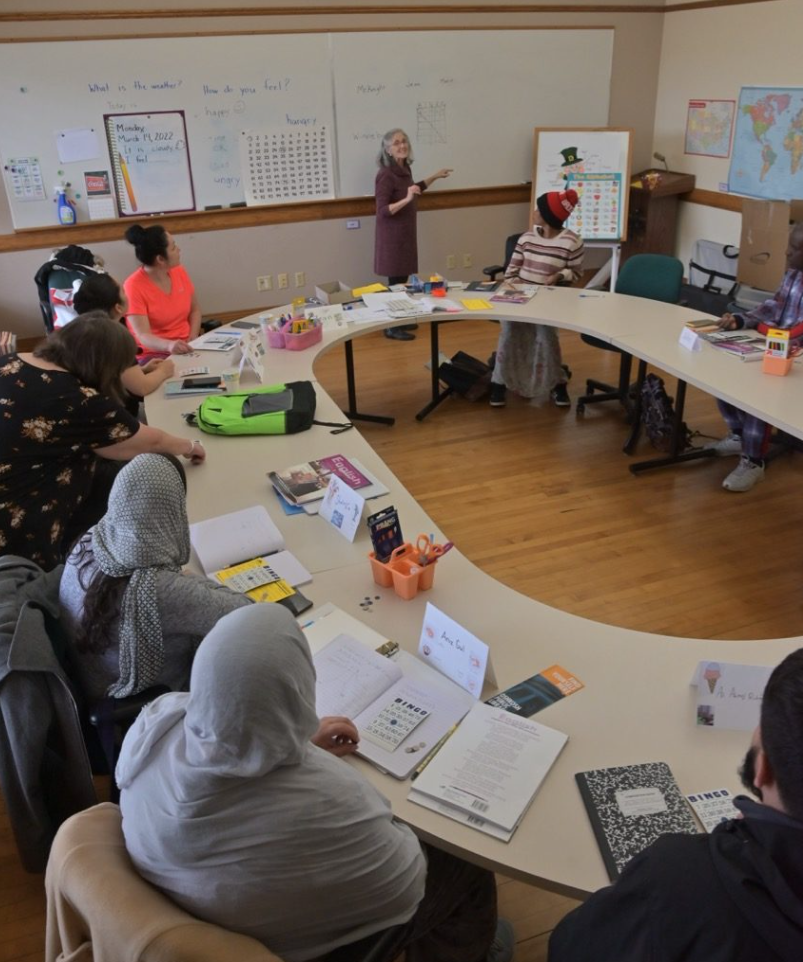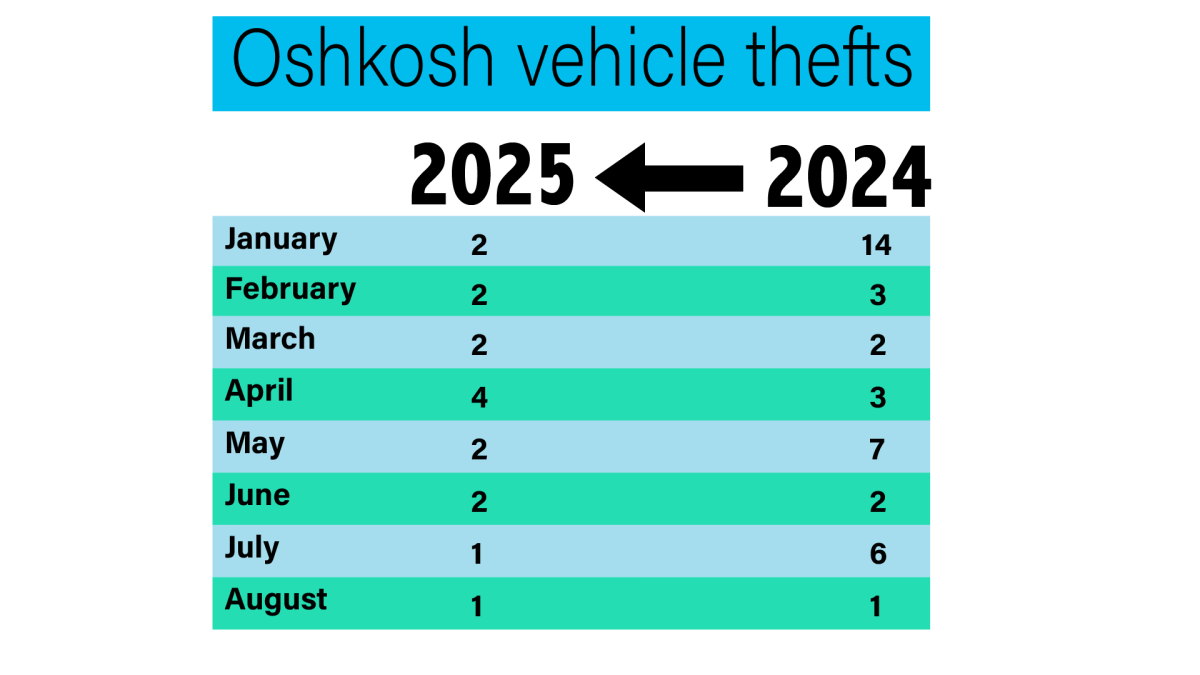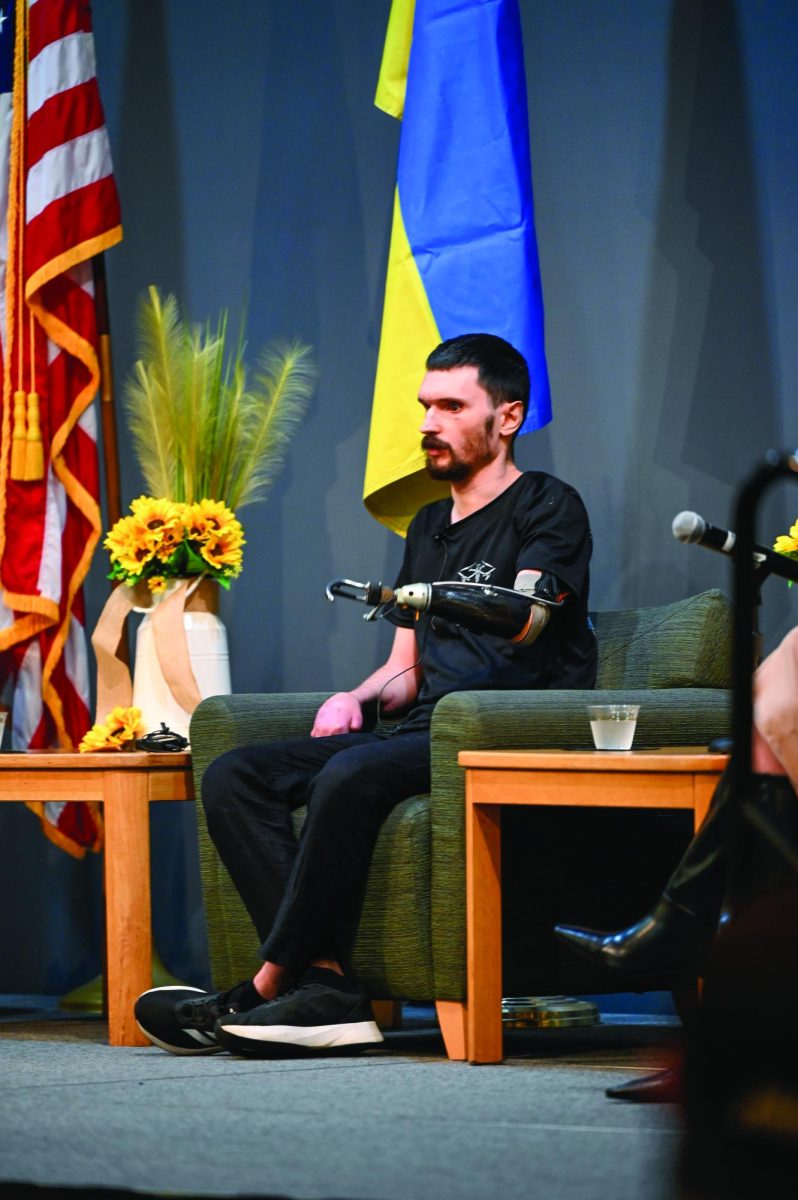
The Historic Jackson Neighborhood Safety Committee has been a neighborhood central group for 20 years. The group formed because of safety concerns regarding speeding, high crash rates and inattentive driving on Jackson Street.
Shirley Mattox, a Historic Jackson Neighborhood Safety Committee member, has lived on Jackson Street for more than 30 years. She has served as an active member of the Historic Jackson Neighborhood Safety Committee for 19 years.
“The signs that you see going down Jackson Street are a visual to pay attention to speeding,” Mattox said. “It is also a united message.
Eighty-five neighbors have consented to having signs in their yards. The signs serve as a message that this is a family neighborhood with children, dogs and bicyclists.”
Student Brianna Colebourne said she finds it difficult to cross Jackson Street.
“Most people aren’t willing to stop for you unless there is a big group of people that starts to inch forward in hopes that someone will stop,” Colebourne said. “Once you get one car to stop, other cars are more likely to follow the trend and stop for you as well.”
Colebourne also said she doesn’t think the signs are helpful.
“I have seen these numerous signs put up and down Jackson Street,” Colebourne said. “I do not think it is necessary to put 10 up in a row.
If anything it is more distracting to me because I am reading what every sign says instead of focusing on the road completely.”
According to Mattox, committee member Chloe Wandschneider has created many of the signs residents can place in their front yards for drivers to see as they travel along Jackson Street.
Mattox said she has created signs that have been very popular with messages like: “Little feet can’t compete with speeding and texting on Jackson Street” as well as “Jackson Street, it’s not a track, 30 mph It’s a fact, got it?”
UWO social work student Madeline Forbes said she almost got hit driving down Jackson Street.
“I use Jackson Street probably once every other day, if not every day,” Forbes said. “The other day I almost got hit coming out of the roundabout on Jackson by someone who was speeding and not paying attention.”
Forbes suggested making the crosswalks more visible.
“Traffic goes pretty fast, and I know how hard it is to pull out in my car so I can’t imagine how hard it is to cross on foot,” Forbes said. “My suggestion would be to mark the crosswalks better.”
According to Mattox, the Oshkosh Police Department has been very involved with the safety committee and is doing all they can to help the situation.
“Police from three different districts work together and attend our meetings,” Mattox said. “They listen, they are supportive, they are extremely helpful and they are doing their best to help.”
Mattox also said there is a weekly meeting where the committee will put in place a list of concerns and solutions to cover with the Oshkosh Police.
“Lane hopping and speeding have been our biggest concerns,” Mattox said. “Some of our proposed solutions have been to have a greater police presence, and we understand the impact on the police budget, the second option, to install a DIET, which would be to redesign the the four lanes so it would be two driving lanes, a left turn lane, north-south bike lanes or one lane of parking.”
According to a 2016 crash study, there were only two accidents at the Murdock and Wisconsin Street intersection, compared to nine the previous year, before the installation of the DIET, also known as a lane reduction.
There is a stark difference between the reported numbers of accidents where the DIET was installed on Murdock versus Jackson Street, where there is currently no DIET installed. According to the study, there were a total of 15 accidents at the intersection of Jackson and New York in 2016.
According to the study, there was a total of 807 intersection accidents in Oshkosh in 2016, much higher compared to 694 in 2015.
Kate Mann, Oshkosh Police Department Public Affairs and Crime Prevention Officer, said that the OPD is in the middle of doing a speed study for 2017.
“The OPD is in the middle of doing a speed detail/study of the speeding issue on Jackson Street,” Mann said. “Data is being collected in various locations and at different times to help determine the extent of the speeding problem.”
Mann also talked about some of the solutions that the police have been trying to enforce regarding the issue.
“We are doing this like focused radar enforcement, laser enforcement, saturation details, speed tubes/speed board to collect data and a higher visibility police presence including squad and motorcycle,” Mann said.
Mann said they hear various reasons for why people speed on Jackson Street.
“They were not paying attention to how fast they were going, just in a hurry to get where they are going, did not know it was only a 30 mph zone or just keeping up with the car in front of them,” Mann said.
Mattox said the committee is very concerned for students’ safety trying to cross at intersections.
“I’m concerned for kids from the University. There is no way to go East/West without crossing Jackson,” Mattox said.
Ken Cravillion, a local citizen, said he doesn’t feel safe walking his seven- and ten-year-old daughters to Oaklawn Elementary School at the intersection of Jackson Street and Linwood.
“Walking my girls to school, I would say only half of the cars and trucks slow down to an appropriate speed,” Cravillion said. “Also, usually once a week, someone will not be paying attention and drive through the crossing guards stop sign. On more than one occasion, I’ve had to dodge cars while crossing even with the crossing guard displaying his sign.”
Cravillion said even when he drives his kids to school, he still has issues.
“Also, when I’ve driven my girls to school, I’ve gotten beeped at for driving the school zone speed limit,” Cravillion said.
According to Mattox, many citizens in the area are concerned for safety, including their postman.
“I spoke with the postman who has delivered our mail on Jackson for one year,” Mattox said. “He said he never feels safe crossing Jackson Street or the intersecting streets; he never knows who is going to make a fast turn off Jackson. He walks this route six days a week.”
“He recommends painting large white crossing blocks, especially at Congress/Jackson and Nevada/Jackson,” Mattox said.
Colebourne also had a suggestion for improving safety while crossing Jackson Street.
“I think that it would be beneficial to have blinking lights on signs that say yield to pedestrians,” Colebourne said.













